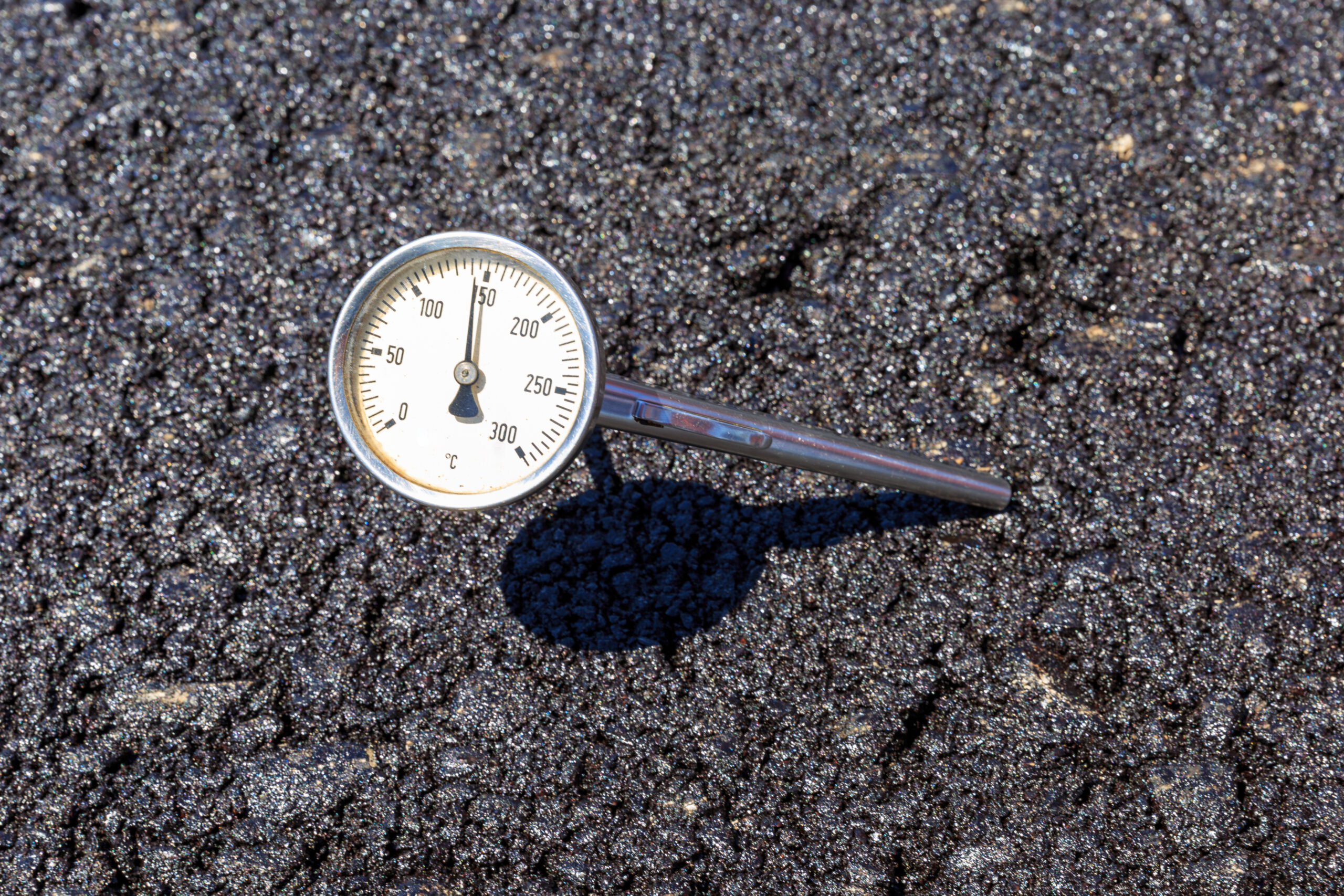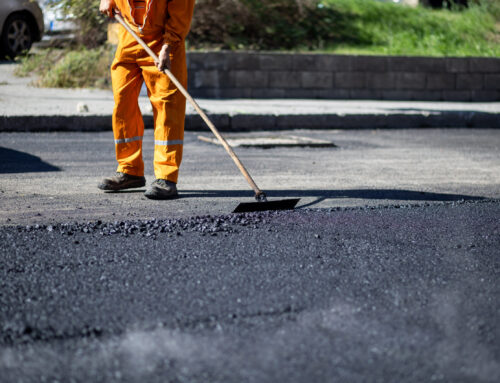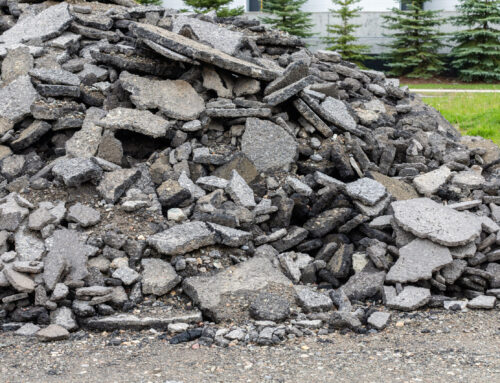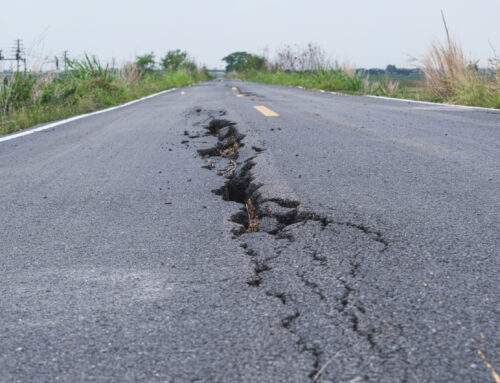Asphalt is our bread and butter, and a common material used for roadways, driveways, and parking lots. It’s a sturdy, durable, and cost-effective material. It does have one downside, though especially here in the Arizona summers – it can get hot! This time on the Sunrise Asphalt blog, we’re doing something a little different and discussing how hot asphalt can get, who should be most concerned about it, and how you can help address that heat.
How Hot Can Asphalt Get?
Ok, first up, how hot does that asphalt get? Asphalt can become extremely hot, particularly during the summer months. The black surface of asphalt absorbs and retains heat, which leads to temperatures significantly higher than the ambient air temperature. On a typical sunny day with an air temperature of 90°F (32°C), asphalt can reach temperatures of 140°F (60°C) or higher. In some cases, like here in Arizona, where the summers hit 110°F+ often, temperatures can soar even higher, reaching up to 160°F (71°C) or more.
These high temperatures are uncomfortable and can also be dangerous! Particularly for vulnerable populations like children, the elderly, and pets, but also for fit folks like athletes and construction workers!
Who Should Be Concerned About Hot Asphalt?
1. Children
Children are more susceptible to burns and heat-related illnesses due to their thinner skin and smaller body size. Playing or walking barefoot on hot asphalt can quickly result in severe burns.
2. Pets
Pets, particularly dogs, are at risk of paw burns and heat stroke when walking on hot asphalt. Their paws can suffer burns within seconds of contact with high-temperature surfaces.
3. The Elderly
The elderly are more prone to heat-related illnesses due to age-related changes in their body’s ability to regulate temperature. Hot asphalt surfaces can exacerbate these risks, particularly for those with limited mobility.
4. Construction Workers
Workers who lay asphalt or perform maintenance on hot days are at risk of heat stress, dehydration, and burns. They work in close proximity to the hot material and are exposed to elevated temperatures for extended periods.
5. Athletes and Outdoor Enthusiasts
Those who exercise or engage in outdoor activities on asphalt surfaces, such as runners and cyclists, are at risk of heat-related illnesses and injuries due to prolonged exposure to high temperatures.
Alright, now how do we help those five groups? The number one thing is to decrease the amount of exposure they get to the hot asphalt during the middle of the hot summer day. Here are some other tips.
How to Address the Risks of Hot Asphalt
1. Protecting Children:
- Supervision: Supervise children when playing near asphalt surfaces. Encourage them to play in shaded or grassy areas instead.
- Footwear: Make sure children wear shoes when walking on asphalt to prevent burns.
2. Protecting Pets:
- Walk Timing: Walk pets during cooler parts of the day, such as early early morning or late late evenings, when asphalt is less likely to be extremely hot. Honestly, in Arizona, it’s probably just best to get their exercise another way.
- Paw Protection: Use paw protection products, such as booties, to shield pets’ paws from hot surfaces.
- Hydration: Ensure pets have access to plenty of water to stay hydrated.
3. Protecting the Elderly:
- Avoiding Hot Surfaces: Encourage elderly individuals to avoid walking on hot asphalt surfaces during peak heat hours.
- Appropriate Footwear: Ensure they wear proper footwear to protect their feet from burns.
- Stay Hydrated: Keep elderly individuals well-hydrated and provide shaded areas for rest.
4. Protecting Construction Workers:
- Heat Safety Training: Provide heat safety training to workers, including teaching them to recognize the signs of heat stress and heatstroke.
- Breaks and Hydration: Schedule regular breaks in shaded areas and ensure workers can access plenty of water.
- Protective Clothing: Use heat-resistant clothing and proper footwear to protect against burns.
5. Protecting Athletes and Outdoor Enthusiasts:
- Activity Timing: Schedule outdoor activities during cooler parts of the day to avoid peak heat.
- Hydration: Drink plenty of water before, during, and after outdoor activities.
- Surface Alternatives: When exercising, choose alternative surfaces, such as grass or shaded trails, to avoid prolonged exposure to hot asphalt.
Understanding the risks associated with hot asphalt is essential for ensuring the safety and comfort of everyone who comes into contact with asphalt surfaces. Asphalt is a great material, but it sure knows how to hold onto that heat! Stay safe out there this summer!





